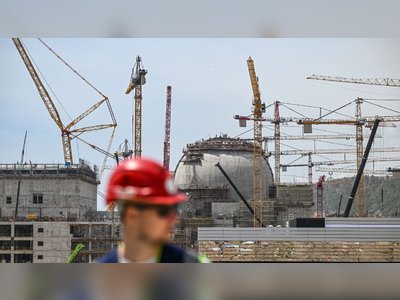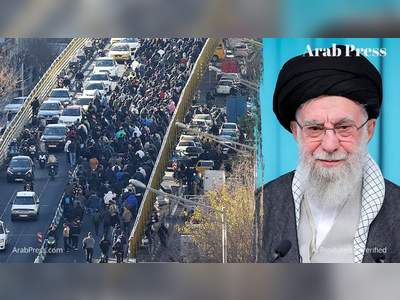KAUST selects HPE to build Middle East’s most powerful supercomputer
Supercomputing capacity has become increasingly vital to global innovation, industry competitiveness and economic growth. From accelerating vaccine discovery to fight a pandemic, advancing clean energy systems to increase sustainability, to enabling new possibilities in AI, supercomputing is a core technology to solving the world’s most challenging scientific and engineering problems.
Shaheen III ushers in a new era of scientific discovery and AI innovation for the Middle East
Shaheen III, set to be 20 times faster than KAUST’s existing system, will be the most powerful supercomputer in the Middle East to address critical areas that have a societal and environmental impact.
Built by HPE, the world’s leading supercomputer provider, the new Shaheen III system will revolutionize KAUST’s ability to process vast amounts of data at immense speed and scale, enabling its users to unlock discoveries that it could not have before, and realize new potentials for AI.
Shaheen III will be built using the HPE Cray EX supercomputer, a next-generation platform architected to support unprecedented performance and scale, including achieving exaflop speed.
The HPE Cray EX supercomputer, which delivers advanced end-to-end capabilities in compute and accelerated compute, networking, storage and software solutions, allows KAUST to apply significant computational power toward modeling and simulating scientific problems faster and with higher accuracy.
HPE’s supercomputing capabilities also enable AI-at-scale by combining its massive computing power and specialized capabilities that are required to build machine learning models and train large amounts of data.
With the Shaheen III design, HPE is further fueling KAUST’s AI-at-scale mission by integrating the HPE Machine Learning Development Environment, an optimized software stack for model training and development.
By combining the machine learning software platform with key supercomputing technologies, KAUST’s users can easily develop and train AI models faster, and bigger, for increased accuracy.
“At HPE, our purpose is to advance the way people live and work, and we are honored to help fuel Saudi Arabia’s Vision 2030 for a new era of innovation by empowering KAUST with a state-of-the-art supercomputer,” said Antonio Neri, president and CEO of Hewlett Packard Enterprise.
“Shaheen III will significantly accelerate research at KAUST by applying world-leading supercomputing and AI-at-scale capabilities to increase accuracy in analyses and solve complex scientific questions.”
“The new HPE Cray EX system will allow us to conduct research on a larger scale, resulting in significant scientific, economic and social advances,” said Dr. Tony F. Chan, president of KAUST.
“In line with Vision 2030, we strive to meet the ever-increasing demands of our active and solutions-driven faculty, and also those of external partners, for faster and more efficient computing resources.
“KAUST supercomputing resources are used by more than half of our faculty, students, postdoctoral students and researchers, and researchers from more than 20 external organizations in the Kingdom.”
Accelerating research and developments in energy, environment, healthcare and bioengineering
Shaheen III will be fully operational in 2023. The new supercomputer will process unique data sets in focus areas such as clean combustion, Red Sea ecosystems, climate modeling and the Arabian tectonic plate, while delivering analyses, models and simulations at a superior level of resolution.
KAUST’s users plan to target a range of applications, including the design of new materials for low-cost/high-performing solar photovoltaics; new industrial catalytic processes to increase energy efficiency while reducing waste; personalized preventative health care and the discovery of new medicines; increased hydrocarbon recovery with reduced environmental and economic costs; and the use of genetic, genomic and epigenetic approaches to enhance plants’ drought tolerance and resiliency in desert environments.
Equipped with more than 2,800 NVIDIA Grace Hopper Superchips, tightly coupled CPU/GPU accelerators, the Shaheen supercomputer will enable the development of novel and scalable techniques in core AI fields such as deep learning, reinforcement learning, federated learning, visual computing, and natural language processing, and also provide unique opportunities to further scale traditional HPC workloads.
This GPU-accelerated partition will also facilitate the broad use of applied AI in science and engineering applications, including computational chemistry, biology and material science, which previously were unfeasible given the large-scale nature of data sets produced and used at KAUST.
Applications will increase in coming years as Shaheen III is expected to deliver 100 petaflop/s of performance and outstanding AI modeling capabilities.
“A supercomputer like Shaheen III is a universal scientific instrument employed by scientists and engineers in every discipline for tasks such as simulation, analysis of experimental data, learning from observed data, and efficient data storage and retrieval,” said KAUST Extreme Research Computing Center (ECRC) Director Dr. David Keyes, professor of applied mathematics and computational science.
“It is the ultimate scientific ‘watering hole’ at which researchers of different disciplines exchange techniques and software tools. An advance in one field spurs advances in several.”
As one of the world’s leading supercomputing centers, KAUST is building on the success of its first supercomputer, Shaheen I, launched in 2009, followed by Shaheen II, a Cray-based supercomputer 25 times faster than its predecessor at 5.54 petaflop/s.
“Shaheen II has delivered 6.8 billion computing core-hours to more than 1,467 users, resulting in data used in about 1,030 publications to date,” said KAUST Research Computing Core Labs Director Dr. Jysoo Lee. “Shaheen III will ensure that the KAUST community will maintain its edge as a world-class university in computational sciences.”
“AMD is committed to the advancement of scientific research and development in high-performance computing, driving the technology behind computational modeling, simulation and AI,” said Forrest Norrod, senior vice president and general manager, Data Center Solutions Business Group, AMD.
“Powered by AMD EPYC processors, Shaheen III will enable new discoveries that will have regional and global impacts across climate, clean energy and tectonic plate modeling, all made possible by the collaboration between KAUST scientists and HPE.”
“As we push deeper into the era of Exascale AI, supercomputers like Shaheen III are increasingly central to transforming society,” said Ian Buck, vice president of hyperscale and HPC at NVIDIA.
“Enabled by our deep collaboration with KAUST and HPE, and the adoption of our new Grace Hopper Superchip, Shaheen III will be a key scientific instrument that offers unrivaled performance to help tackle the world’s toughest challenges.”
















